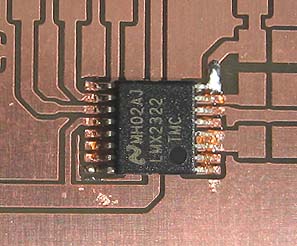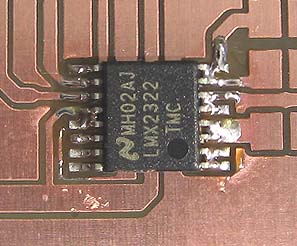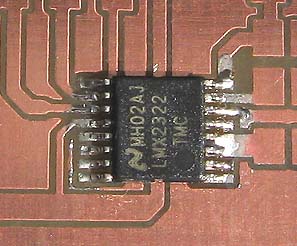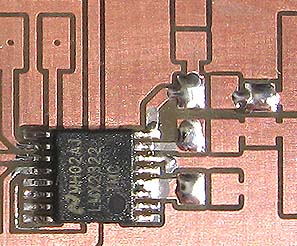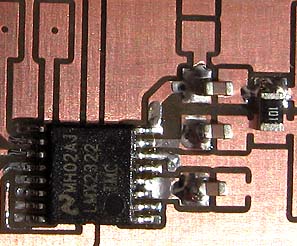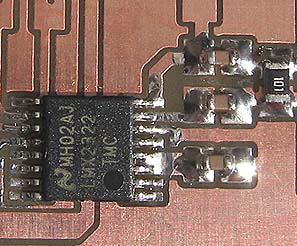(1.) Clean PCB
(2.) Pre-fixing of the SO-circuit
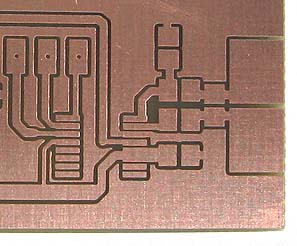
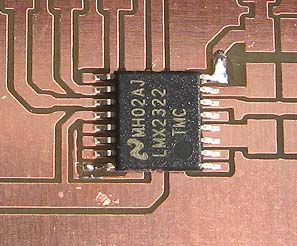
(All PCB in my KITs are cleaned and ready to be soldered)
I fixate the circuit at the top right corner and the bottom left corner.
Since you only have soldered two legs, you can easy correct the position of the circuit. At this point the soldering of the legs are not important. More important is that you have good match of the PCB strip lines and the legs of the circuit.
